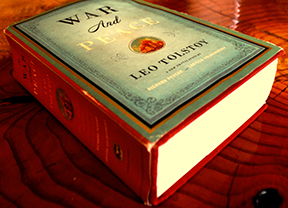WHAT CAN YOU DO WHEN THE CLASSROOM READING LEVEL DOESN’T MATCH YOUR CHILD’S?
Classroom Woes
One mom recently wrote me about her teenage daughter, whose special ed teacher, though a good egg, is teaching reading materials not only ‘way above the teen’s head, but of no interest to her. So who basically does the homework, the book reports, the teacher sends home? Mom. This is a waste of the mom’s time and isn’t moving the teen forward. Mom tries to synopsize the material down to the girl’s level, but when the book is complex, what do you do?
Woody Allen & Comprehension
That reminds me of a story. Woody Allen was being interviewed; he fabricated a story about this fabulous speed-reading course he had just completed. “I read ‘War and Peace’ in 20 minutes!” he bragged. “Really? You were able to understand the book in 20 minutes?” asked the interviewer. “Yes,” said Woody, “it’s a book about Russia.”
Love it.
So Why?
Why are we laboring to adjust material of zero interest to a child? This mom asks, “Should I insist on giving her materials she is ready for? She is probably one of the lower functioning children in her class, so perhaps it’s not being individualized for the child, but instead going with the majority.” YES, she should insist, and YES, the educator is teaching to the bell curve. Maybe this teacher needs more support in the classroom? (Ya think? It’s arguably a national problem.) Or hasn’t been coached in best practice for teaching kids with Down syndrome?
Plan A: A Dream Teacher
Let me interject here that IF you have a fabulous teacher, either gen ed or special ed teacher like my son Jonathan did in high school, modification can certainly work! His teacher Barbara Gamboa, running an exclusive (special ed) classroom, was alert to what was happening in the typical classrooms. She focused on the same novel the other classes were currently studying, and brilliantly created modified activities and reading materials to help her class totally “get it.” Even if her students weren’t crazy about the book’s topic initially, they enjoyed the study unit because she made it interesting and engaged them in activities they could do.
Plan B: Match the Materials to the Child
I hope this is obvious! We teach children right where they are. We bring them forward inch by inch, encouraging always with every tiny success. We teach to their learning style and level, and make the material interesting. And if it ain’t interesting to them, then by golly, we find something that they ARE interested in and teach them with THAT.
If the educator is receptive to this thought and willing to switch tracks, terrific; your child will be motivated and will be able to move forward. If not, see if the next IEP can include goals based on this very fundamental need for motivating material at an appropriate level.
The Eleventh Commandment
Nowhere is this approach more important than with our kids with Down syndrome, who have a well-deserved reputation for shutting down when they’re not interested in the materials. I wrote an Eleventh Commandment just for fun–and to drive home the point–which I include on a slide in my workshops, and it goes like this:
“Children with Down syndrome shalt be interested in only what they are interested in, and shalt not be interested in any other thing. Woe be unto those who do not revere and abide by this commandment. Amen.”
At my last workshop, the parents and teachers in the audience loved this “commandment” slide so much, I had to back up and wait while they captured it with their iPhones. I think it hit a nerve.
Seriously, Now
Educators in particular will run the farthest and the fastest when they keep this DS Commandment in mind. Good luck to the mom who asked, to teachers, to parents, to all!



Would like info on how to teach a 49 year old young woman with Down Syndrome how to read..
Hello, Patty- The “how to” is exactly the same as far as teaching methods go; if you will study all of the reading blogs on this site, particularly the “Success Steps” 1-13, you will know how to do it. What IS different are the materials used in that they must, in the beginning of learning, be targeted to that young woman’s interests, and her interests only–otherwise you won’t be able to engage her interest and determination. You might want to start by reading my “It’s never too late to learn to read” blog on this site, at https://specialreads.com/?p=77. Good luck!